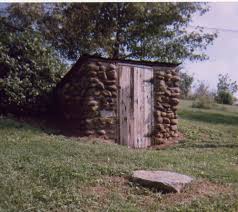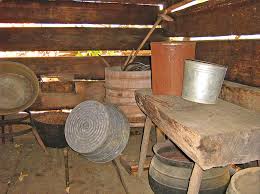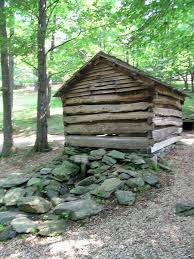Spring Houses
- D. Watson
- Nov 6, 2015
- 2 min read
Spring houses probably go back to Colonial times. In the eighteenth and nineteenth centuries they were a part of the rural landscape. They were a good way to keep the water pure, and they were a natural refrigeration. On the hottest day in the summer spring water in a spring stays at a temperature of about 50 degrees Fahrenheit.
When the early settlers in Colonial days looked for a place to build a home, one of the first things that they looked for was a good spring. When the spring had walls built around it and a springhouse built over it, it was a year-long refrigerator. Ledges and places to hang meat, vegetables, and fruit were made of stone and metal hooks. Early spring houses still survive while other outside buildings have failed to survive.
Early spring houses were built of logs, but the wood did not last long because of the constant dampness. Spring houses were usually rock structures built over a flowing spring. Rock was used as rock holds cold, and during floods solid rock spring houses did not wash away.
A spring house with two separate rooms was typical, a room for making butter and cheese and a room to store supplies. This supply room had the spring pool. In this way the milk and milk products could be kept cool. Vegetables, fruit, barrels, jugs of cider and vinegar could be stored as well. Prepared foods were placed into crocks and partially submerged in the water. The second room was used to separate the cream from the milk and to churn the cream into butter. Butter was used in food preparation but was also used as a dressing for burns and cuts as the farmers thought that butter had a healing ability. If there were a fireplace in the second room, this became a place to do laundry in cold weather. Butchering and making soap could also be done in this second room.
A spring house also came to be called a milk house. Spring houses stayed in use until sometime around the second half of the twentieth century.
About the middle of the 1800s creameries and butcher shops started to arrive in rural areas. Therefore, making the butter and cheese and doing the butchering at home started leaving the spring house. Wells started to take the place of springs. Spring houses did not stop being natural refrigerators but stayed in use as coolers until the 1930s.
Meat was hung in a spring house until cooking or smoking. The icebox, the forerunner of the refrigerator, took the place of the spring house.
Spring houses were critical to the survival and development of farms. Spring houses were the most common outbuildings. Probably they were outnumbered by only barns and privies. Spring houses started as outbuildings to preserve and to refrigerate food for the survival of farm families. Today they are a decorative symbol of by-gone days.
Spring Houses, Important Buildings in the Past
By Nancy Bender


































Comments